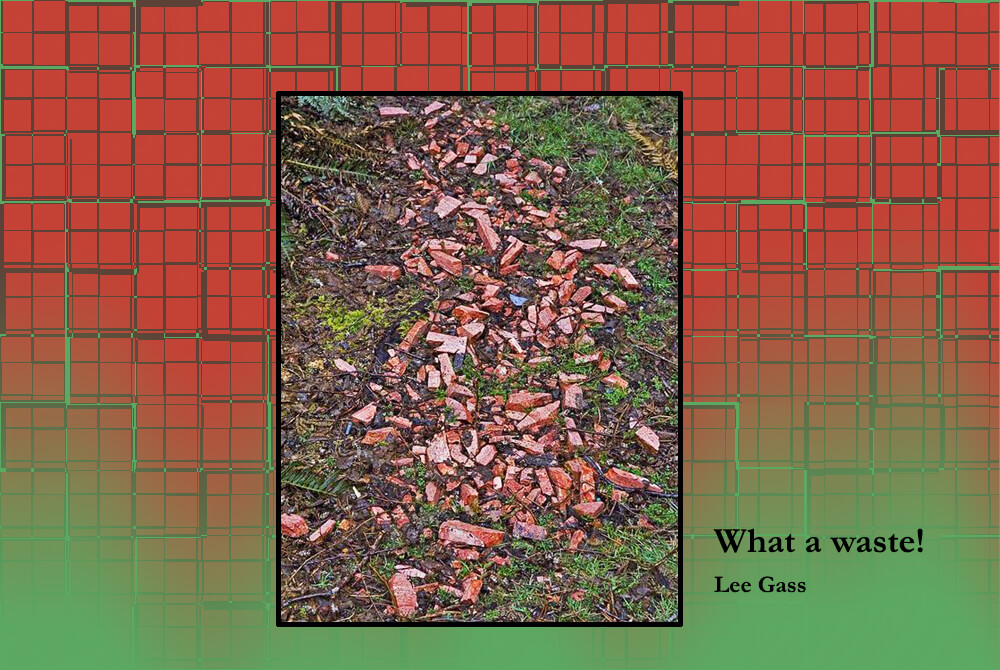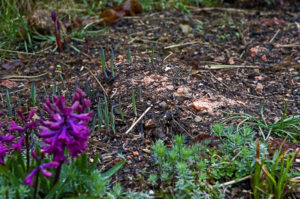Red travertine waste from Red Recursion
paving a trail through the woods. It
is buried now by several layers
of several kinds of stone.
Waste and photo
by Lee Gass.
I often admit that
carving rocks is a strange way
to make a living. But I’ve never thought of
it as a waste of time, resources,
or anything else.
It does produce
waste stone, though, and the
question is what to do with it. A hundred
pounds of finished sculpture generates
at least that much dust, mud,
chips, and larger pieces.
Tailings piles
might work for mines and slag
heaps for smelters, but I prefer more
practical, more personal, pleasing, and
environmentally friendlier ways to dispose
of waste from the industrial zone of my
studio. Mud goes down drains to
a settling tank, where I
recover it for the
garden.
Outside, dust layers
nearby surfaces and drifts into
trees. Inside, I filter dust from the
air or it falls on the floor and I collect
it. What I recover goes in buckets,
sorted by type for the
garden.
For lime-loving
plants like lilacs, peas, and kale,
carbonaceous marble, calcite, travertine,
and limestone dusts and muds sweeten
and alkalinize soil. Silicaceous granite
and basalt dusts and muds enrich soil
nutrients and improve
drainage.
Sand and small
chips of all kinds also go to
the garden, where they provide
colour accent in beds. Gravel
and larger chips pave
paths in the
forest.
That’s so much
fun that sometimes I wish I
made 10 times as many sculptures
as I do. But the forest is large and the
paths are long. Unimaginable volumes of
sculpting waste couldn’t keep them paved,
even for a season, before they were
swallowed by the teeming
life of the rain-
forest
and
we’d have
to add another layer.
Dreams.
Yellow paths of
calcite and limestone and
red ones of granite, travertine,
and marble. Marble paths as white
as snow. Black ones and pink ones
and white ones of granite. How
much carving would it take
to do that? I can’t
imagine it.

The largest
fragments are for walls and
other construction projects. Another use is
paving stone. Red Persian travertine from rough-
ing out Madonna and Child and Reflections
in a stone stairway I built below
our front steps.


If I decide not
to carve a stone, like this
brucite, I can use it as building stone,
here fitted into the same stairway lower
down. If I change my mind, I can take
it back out and carve it. I made
a small valentine in a
piece of it.


Another kind
of sculpting waste is failed
sculptures, like this Quadra Island
limestone I tested to see what
abuse it could take. It
couldn’t take
much of
it.
A
visitor
bought both
pieces and took
them home.

First published in the Vancouver Observer.
Edited March 2021



